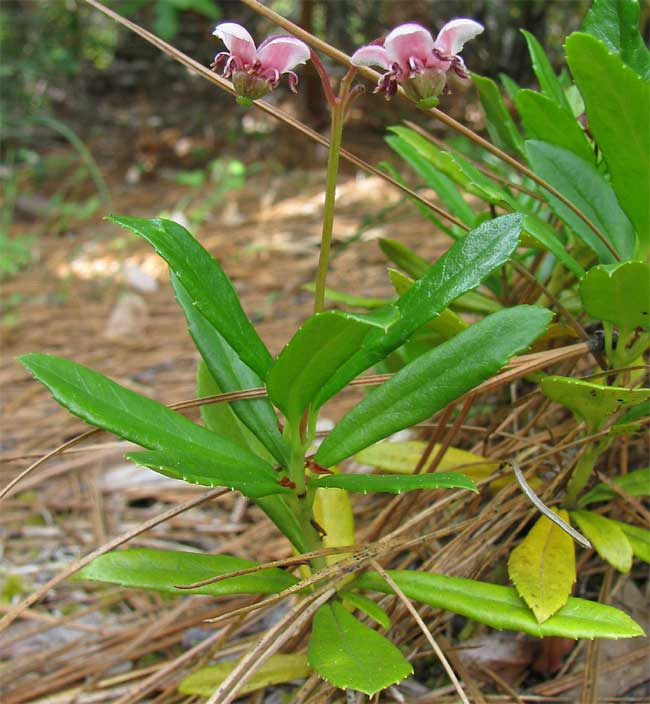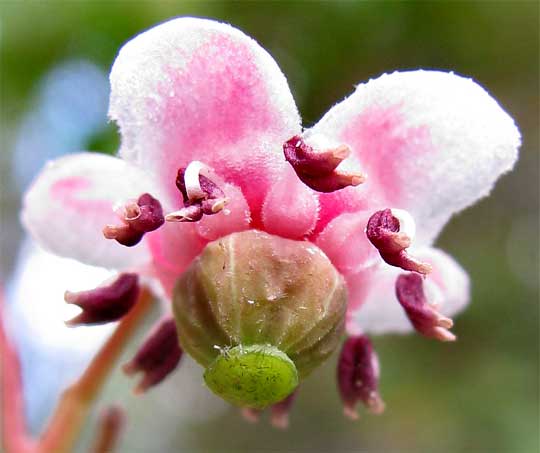Excerpts from Jim Conrad's
Naturalist Newsletter

from the the June 21, 2009 Newsletter, issued from the Siskiyou Mountains west of Grants Pass, Oregon:
PIPSISSEWA
Last weekend after a tiring hike along a narrow mountain ridge I found a nice spot for my tent in a clearing surrounded by pines, pegged my tent and crawled in as the mosquitoes began clouding around me. Resting lying on my belly looking through the tent's screen door, the first thing my eyes focused on, in deep shade just a few feet away, was a plant about eight inches high holding aloft two pale pink blossoms almost too elegant to be real, as shown above.
*UPDATE: At first I assumed that this was the similar but slightly different western relative of the Eastern plant I'd seen so often in the Appalachians, called Pipsissawa, this being the Little Prince's Pine, Chimaphila menziesii. However, years later when I uploaded this page's pictures to iNaturalist, user "tsn" recognized that it was in fact the same species seen back East, the Pipsissawa, CHIMAPHILA UMBELLATA. Now I see that the Pipsissawa is divided into four subspecies; one is Eurasian, another northeastern North America, a third southwestern North America, and this one, Chimaphila umbellata ssp. occidentalis.

In the above picture the flower's corolla comprises five pink petals in the normal fashion. At the petals' bases ten stamens arise, their stemlike filaments unusually broadening at their bases but narrowing and becoming hooked above before ending in baglike anthers. The anthers dispense their load of pollen not through slits the normal way, but through tiny pores, clearly seen in the picture at the tips of each anther's two crests.
The large, brownish, oval thing below is the ovary, which will mature into the fruit, and that green disc at the image's bottom is the grossly oversized (relative to other flower-types) stigma. One wonders at this blossom's parsimoniousness with regard to providing its male pollen such tiny escape holes in the anthers, but remarkable lavishness in providing a landing pad for that pollen, which is what the stigma does.